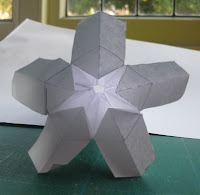

THE EVENT
The Salone Sattellite is known for its innovative design entries and "out of the square" thinkng. I tried to keep this in mind when i was designing my chair. I tried not to make it look like a box by adding interesting triangulation and i also wanted it to be one piece, rather than several pieces
IDEA
The idea behind the OB1 chair is that it can be used as a chill out chair for people attending the Salon Sattellite in Milan. Anyone can sit on this chair and read a brochure, rest their feet, eat some food etc
WHERE:
These seats will be placed in various locations around the exhibition, especially in high traffic areas where people are more likely to need to sit and rest
XANITA:
The chair fits into a 1200 x 1800mm board of xanita is only 1 cut out piece. It is easily assembled and dissassembled with little stress to the material. It is easily carried flat or in chair form and can be flat packed for transportation.
With more material and time, the OB1 chair could be transformed into other seating and table options.
















































